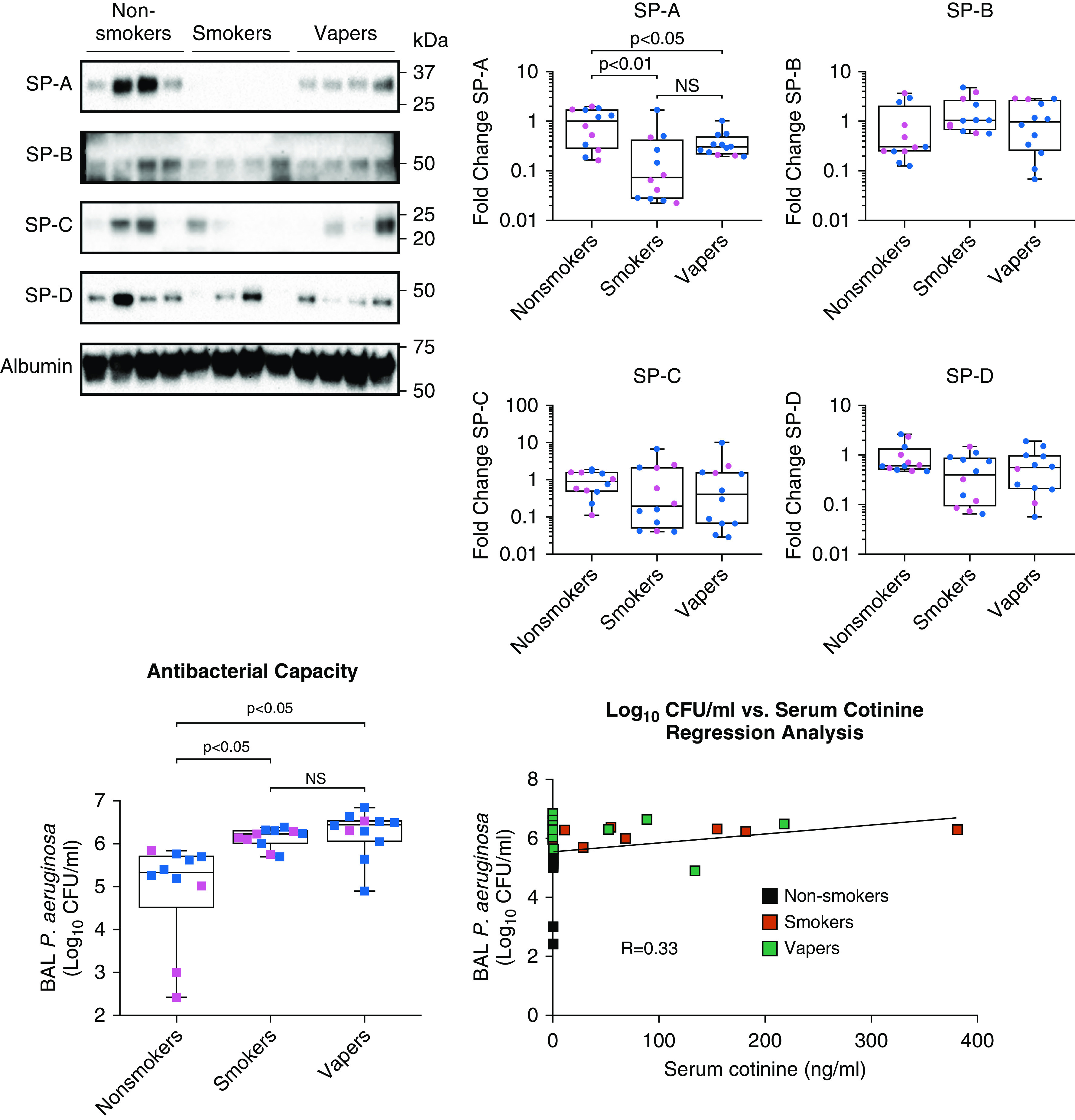Figure 2.

Smokers and vapers show reduced pulmonary surfactant A levels and reduced antibacterial capacity. BAL samples were collected from healthy nonsmokers, smokers, and vapers to obtain the secreted proteins. Concentrated BAL fluid was used for the estimation of SP (surfactant protein) levels by Western blotting. The primary antibodies used were the SP-A antibody (Novus Biologicals), SP-B antibody (ABclonal), SP-C antibody (ABclonal), SP-D antibody (R&D Systems), and human serum albumin antibody (R&D Systems). The densitometric analysis was performed to evaluate the change in expression. The graphs show significantly decreased SP-A expression in both smokers and vapers compared with the nonsmokers, and all other surfactant proteins remained unaltered across the three groups (n = 12 per group). The data are represented as fold change compared with the nonsmokers. For the evaluation of the antibacterial property, BAL fluids were incubated with 103 cfu/ml of P. aeruginosa for 2 hours and plated on Luria-Bertani agar plates. After 24 hours of incubation, colony-forming units were significantly greater in both vapers and smokers (n = 11 each) than in the nonsmokers (n = 10), indicating a reduced pulmonary antimicrobial capacity in users. The regression analysis of available serum cotinine concentrations with cfu/ml showed a weak correlation (R = 0.33). The pink dots and squares are female subjects, and the blue dots and squares are male subjects. Tukey’s post hoc test derived the P values are provided on the graphs. NS = nonsignificant; P. aeruginosa = Pseudomonas aeruginosa.
